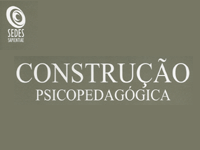The texts submitted must follow the ABNT (Brazilian Association of Technical Norms) standards, following the following criteria: typing in Word for Windows, A4 size, upper / lower and right / left margins of 2.5 cm, letter in Arial font, page with 1,400 characters with space, according to the requirements of each category of article, explained in item I of this guide.
The article can not exceed the number of 20 pages.
An article should contain:
For the Original article:
a) Introduction; b) Material and Method; c) Development c) Results; d) Discussion; e) Conclusions f) References
For the Review article:
a) Introduction; b) Methodology; c) Development d) Conclusions d) References
Formatting Model:
TITLE IN PORTUGUESE OR SPANISH
(ARIAL 14 CAPITAL - BOLD)
Author’s name (Arial 12 italic- right-aligned) followed by * or 1
All authors should appear with the affiliation just below the name. In case there is no affiliation, put the city, state and country in which it acts. Ex.:
Fatima B. Camargo * (Arial 12)
University of Psychology 1 (Arial 8)
Luísa C. Andrade 1(Arial 12)
University of Campinas (Arial 8)
Jucilene da Silva Pereira 1 (Arial 12)
University of Campinas, Campinas, São Paulo, Brasil (Arial 8).
Summary (Arial 12 bold)
Text in Arial 12 - Spacing between lines 1 (single)
Keywords (Arial 12 bold): words (Arial 12) separated by commas and with the first letter always in upper case.
TITLE IN ENGLISH- (ARIAL 14 CAPITAL LETTER-BOLD)
bstract (Arial 12 bold)
Text in Arial 12 - Spacing between lines 1 (single)
Keywords (Arial 12 bold): words (Arial 12) separated by commas and with the first letter always in upper case.
Footnote
*or 1 Qualification (Arial 8)
Ex.: * Psychopedagogue and Psychologist or 1 Psychopedagogue and Psychologist.
Subtitles (Arial 13 Bold, High and Low, ie, First Capital Letters)
Quotes - Arial 10 with indentation at 4 cm, simple spacing between lines.
Acknowledgments should be placed before references (Arial 12)
Textual elements and textual posts should follow the pattern: Arial font 12 spacing 1,5.
References (Arial 13 bold)
References in the same font and text size (Arial 12)
Examples below, depending on the different sources of query:
ABAURRE, Maria Bernadete; FIAD, Rachel; MAYRINK-SABINSON, Maria Laura. Cenas da aquisição da escrita: o sujeito e o trabalho com o texto. Campinas: Mercado das Letras, 1997
ALEXANDRE SOBRINHO, Gilberto. O autor multiplicado: em busca dos artifícios de Peter Greenaway. 2004. 194 p. Tese (Doutorado em Multimeios) – Instituto de Artes, Universidade Estadual de Campinas, Campinas, 2004.
BASSI, C.A. Cold: a tecnologia quente. In: INFOIMAGEM, 1995, São Paulo. Anais. São Paulo: CENADEM, 1995. 1 CD-ROM.
BAUMAN, BRASIL. Ministério da Justiça. Relatório de atividades. Brasília, DF, 1993.
FERNANDES, Alicia. A inteligência aprisionada: abordagem psicopedagógica psiclínica da criança e sua família. Porto Alegre: Artes Médicas, 1991.
MAZIERO, Diana. A “fineza do amor” no teatro sacro-retórico-exemplar do Padre Antônio Viera (em catorze sermões escolhidos para este fim). 2004. 169 f. Dissertação (Mestrado) – Instituto de Estudos da Linguagem, Universidade Estadual de Campinas, Campinas, 2004.
POLITY, Elizabeth. Dificuldades de ensinagem: um olhar relacional-sistêmico para a prática psicopedagógica. Construção Psicopedagógica, São Paulo, ano XI, n.8, p.10-23, 2003.
ROMANO, Giovanni. Imagens da juventude na era moderna. In: LEVI, G.; SCHMIDT, J. (Orgs.). História dos jovens 2. São Paulo: Companhia das Letras, 1996.
SCHWARTZ, Adriano. Pretérito e futuro de Machado. Folha de São Paulo. São Paulo, 08 abr. 2007. Caderno Mais, p. 7.
SILVA, M. M. L. Crimes da era digital. NET. Rio de Janeiro, nov. 1998. Seleção Ponto de Vista. Disponível em: http://www.brazilnet.com.br/contexts/brasilrevistas.htm. Access in: 28 nov. 1998.
VIEIRA, Cássio Leite; LOPES, Marcelo. A queda do cometa. Neo interativa. Rio de Janeiro, n. 2, inverno 1994. 1 CD-ROM.
Letter of Assignment of copyright to the Sedes Sapientiae Institute
Title of the Work
(Portuguese and English)
|
|
Author
(Name and Qualifications)
|
|
Institution where the works has been done:
(Name and Address)
|
|
Short Title
|
|
Address/phone for contact
|
|
E-mail
|
|
Declaration
I, ......................................., I am responsible for the content of the work and I agree with the publication rules of the Electronic Journal of Psychopedagogical Construction of the Department of Psychopedagogy of the Sedes Sapientiae Institute, for which early the copyright of the aforementioned article.
I further declare that this work of my own, has not been presented or published in other media and is not waiting for publication.
Author’s signature
Send date
** |

